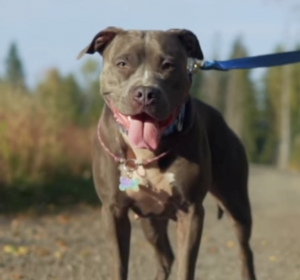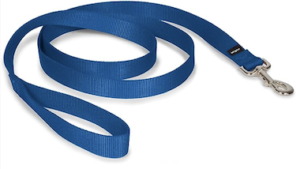Pennsylvania Dog Bite Law
Knowledge of Pennsylvania dog bite law is needed to win your civil case for damages at trial or at the settlement table. Below is key information about the nuanced law that applies in dog bite and animal attack cases in PA.

WHEN TO MAKE A CLAIM
The statute of limitations in Pennsylvania for adults attacked by a dog is two (2) years . This start running the date of the injury. However, for minors, it’s different. The statute of limitations does not run until they turn age 20. However, there are important reasons to at least notify the responsible party of your claim ASAP.
TYPES OF RECOVERY
The victim of a dog bite in Pennsylvania may obtain a recovery of money for pain and suffering, disfigurement (for a scar), emotional distress (for both the person attacked and the person witnessing the attack, in some instances) medical bills.
The victim can also claim lost wages (lost work), lost earning capacity, workers’ comp (from one’s employer, not the dog owner)l, embarrassment, injuries or death to your own dog, and more. There might even be a claim for punitive damages for a dog bite, as we address here.
Our Pittsburgh dog bite lawyers also help the spouse of a victim to recover for loss of companionship (or “consortium”) and the costs of providing care for the victim.
— —
—
DOG BITES: TYPES OF LIABILITY
Strict liability means, the owner of an animal is liable for all damage caused by his dog, regardless of fault or whether the dog has bitten before. Pennsylvania has something close to strict liability for dangerous dogs, but not quite. That is, the negligence standard still applies, unless the injury is “serious.”
A. Serious Injury
In Pennsylvania, the owner of a dog is liable for all serious injuries caused by his dog regardless of “negligence.” It may not matter whether the dog has ever bitten before. Period. Unlike other states, there is no such thing as “one-free-bite” in Pennsylvania.
B. Negligence
Even if injuries are not “serious,” your lawyer can possibly prove negligence on the part of the dog owner. Negligence means a failure to act “reasonably” to prevent harm. The could include a failure to get training for the dog.
To prove negligence, it is not necessary to prove that the person who owned or was responsible for the dog knew of a prior attack, necessarily. Rather, as discussed below, a jury can find negligence where the dog had a known prior history of merely acting aggressively short of biting. This can include merely jumping up on people excessively, or otherwise acting out to make a reasonable dog owner think the dog might pose a danger to those who come in contact with it. However, the mere fact of a dog showing “anxiety” during a veterinarian visit is not enough.
Inadequate Warning. The owner of a dangerous dog has a duty to warn the public of the dog’s propensities. It is not enough to put up a sign “dog on the premises,” or beware of the dog” signage. This also applies for failing to warn a kennel or shelter about your dog’s dangerous propensities .
Violation of criminal Statute. One way to prove negligence is, if the owner violated a statute that exists to prevent animal attacks, which is called negligence per se. Pa has recently increased its fines for dog bite related charges, however the changes to the dog bite law do not create strict liability in all cases.
THE LAW WE CITE FOR SIGNIFICANT RECOVERIES
Several factual instances constitute knowledge of the dog’s viciousness or dangerous propensities. These include but are not limited to: (1) complaints brought to the owner’s attention; (2) fighting with other dogs; (3) frequent confinement of the dog; (4) warning signs on the owner’s premises; and (5) statements by the owner as to the dog’s character. Allen v. Tanchuk, 11005 OF 2007, 2009 WL 6477035 (Pa. Com. Pl. Nov. 10, 2009) (citing Proof of Facts 2d, vol. 13, p. 473) see also Sheptak v. Wagner, 23 Pa. D. & C.3d 46, 48 (Pa. Com. Pl. 1982) and Snyder v. Milton Auto Parts, Inc., 285 Pa. Super. 559, 562, 428 A.2d 186, 188 (1981).
WHAT ARE THE DEFENSES?
It is a defense to establish that the dog had been properly trained, restrained, and no history of aggression whatsoever (which is rare). There, unless the dog bite is severe, no liability will apply. Here is a blog post about some of the questionable (or bad) defenses to a dog bite claim in Pennsylvania.
Provocation. It is also a defense (click here) if the dog had been harassed or cajoled — via provocation — into attacking the victim, which is defense we rarely see, however.
In practice, the most common scenarios seen by our Pittsburgh dog bite lawyer involve blame of things, people, or other dogs, such as:
-
-
-
-
Another dog for stimulating his dog
-
A faulty collar, leash, chain, or other restraint,
-
A fence or latch
-
Someone for opening the front door, to let the dog escape,
-
Another person as the dog “owner,” simply because the dog is licensed to that person.
-
Or, the canine owner must show he had trained the dog. He must show that he obtained training for his pet to both (a) avoid attacking and (b) retrain from attacking when called upon to “heel.”
-
-
-
In reality, however, every person harboring a dog – not just the record owner or the person carrying the license, can be liable. Such persons are also responsible to secure the dog with materials that are suitable.
Note the differences between provocation and comparative negligence, where are set forth here.
DOES PENNSYLVANIA HAVE A LEASH LAW?
Pennsylvania does have a “leash law” (of sorts) discussed below, such that an owner in violation of the leash law can be automatically liable, even if the dog had never acted aggressively before.
In fact, the the Dog Law’s “control of dog” requirements have been adopted as the standard for determining whether a person has complied with the common-law duty to exercise ordinary care with respect to ownership and control of a dog, creating “negligence per se.” 2 Summ. Pa. Jur. 2d Torts § 26:6.
PA Law. What Does the Pennsylvania Dog Law statute provide? As indicated above, under the Pennsylvania Dog Law, the owner of any canine is required at all times to keep the dog either: (1) confined within the premises of the owner; (2) firmly secured by means of a collar and chain or other device so that it cannot stray beyond the premises on which it is secured; or (3) under the reasonable control of some person.
See the PA Code and dog law, generally.
Thus, only “reasonable control” — no a leash — is required. For example, training a dog to obey commands can be evidence of “reasonable control,” even if the dog is off-leash.
Pittsburgh and Philadelphia Law. Both cities requires dogs to be on a leash.
Private Property. The owner of private property — where people walk dogs — can also impose a leash requirement.
For more about leash requirements — and liability for violating leash law — click here.
POSSESSOR OF LAND LIABILITY
Aside from the provision in 3 Pa. Stat. Ann. §459-502, if the Dog Law does not provide a cause of action for our client, you may be able to rely on a possessor’s of land duty to make safe for a licensee:
Courts in Pennsylvania have adopted the language of the Restatement Second, Torts on the duties of possessors of land to licensees. Under the Restatement Second, Torts, a possessor of land is subject to liability for physical harm caused to licensees by a condition on the land if, but only if:
(1) the possessor knows or has reason to know of the condition and should realize that it involves an unreasonable risk of harm to such licensees and should expect that they will not discover or realize the danger; (2) he or she fails to exercise reasonable care to make the condition safe, or to warn the licensees of the condition and the risk involved; and (3) the licensees do not know or have reason to know of the condition and the risk involved. 3 Summ. Pa. Jur. 2d Torts § 39:31.
WORKERS’ COMPENSATION CLAIMS
A party bitten by a dog in the scope of employment — such as a mail carrier or Amazon or Grub Hub delivery person — will have a claim for both workers’ compensation (against the employer) and a claim against the dog owner. Click here for more information about the law in this area. The injured plaintiff may also have a claim for lost wages against the dog owner, cause worker’s comp only pays 2/3 of your average weekly wage. Your claim on the dog owner can bridge the gap.
THE LAW NATIONALLY
Let’s back up and look at the various types of liability in greater detail. In the United States, there are three types of liability in animal attack cases. The first is strict liability. The second: negligence at common law. Thirdly, liability can exist statutorily: the failure to follow a statute, such as a leash law), as follows:
(1) Strict Liability. There is a body of law providing for “strict” or absolute liability for the damage caused by inherently dangerous animals. Let’s say, for example, that your neighbor has a pet tiger reasonably restrained in a maximum security cage. There, the neighbor may be strictly liable for all the harm caused by his pet tiger, regardless, even if you, the victim of an attack by said tiger, were at comparatively negligent for opening the cage door and antagonizing the tiger.
Pennsylvania does not treat dogs as “inherently dangerous” animals. Pennsylvania does not recognize strict liability for any dog, even a pit bull, Rottweiler, or Doberman pincher. Rather, in Pennsylvania, the injured victim must prove negligence (below) or violation of a statute (below) to prevail on a claim for dog bite injuries. Our dog bite lawyers educate about the history of Dog Bite Law in Pennsylvania.
(2) A dog owner is liable for his negligence. In Pennsylvania applies a negligence standard, not strict liability, meaning, the injured party must show that the dog owner made some kind of mistake. For example, this can include failing to keep a dog restrained, failing to warn others of a dog’s known dangerous propensity; or failing to keep a dog known to be dangerous away from others.
(3) Violation of a Statute. PA statutes govern pet ownership. For example, in Pennsylvania, a dog owner must have his dog reasonably restrained, but not necessarily on a leash (discussed below). Plus, violation of any criminal statute can create civil liability for all foreseeable harm and damages, such as physical injuries and disfigurement from an attack.
VIOLATION OF STATUTE IS NEGLIGENCE
To prove negligence at common law, the plaintiff must show that the Defendant violated a duty of care. Typically, a duty of care comes from the surrounding circumstances: was the defendant “negligent” based on all the circumstances? However, that can give the Defendant wiggle room, to show: how was I supposed to know the dog would attack, right then? Fortunately, for those injured by a dog, Pennsylvania courts hold that the violation of a criminal statute, alone, can prove negligence.
Below is the criminal statute in Pennsylvania, which also sets the standard for civil liability in PA for a dog not under reasonable control or running at large:
Section 459-305. CONFINEMENT OF DOGS
It shall be unlawful for the owner or keeper of any dog to fail to keep at all times such dog either:
(1) confined within the premises of the owner;
(2) firmly secured by means of a collar and chain or other devise so that it cannot stray beyond the premises on which it is secured; or,
(3) under the reasonable control of some person, or when engaged in lawful hunting, exhibition or field training.
Section 502-A. REGISTRATION
(a) SUMMARY OFFENSE OF HARBORING A DANGEROUS DOG – Any person who has been attacked by one or more dogs, or anyone on behalf of such person, a person whose domestic animal has been killed or injured without provocation, the State dog warden or the local police officer may file a complaint before a district justice, charging the owner or keeper of such a dog with harboring a dangerous dog. The owner or keeper of a dog shall be guilty of the summary offense of harboring a dangerous dog if the district justice finds beyond a reasonable doubt that the following elements of the offense have been proven:
(1) The dog has done one or more of the following:
(i) Inflicted severe injury on a human being without provocation on public or private property.
(ii) Killed or inflicted severe injury on a domestic animal without provocation while off the owner’s property.
(iii) Attacked a human being without provocation.
(iv) Been used in the commission of a crime.
(2) The dog has either or both of the following:
(i) A history of attacking human beings and/or domestic animals without provocation.
(ii) A propensity to attack human beings and/or domestic animals without provocation. A propensity to attack may be proven by a single incident of the conduct described in paragraphs (1)(i), (ii), (iii) or (iv).
(3) The defendant is the owner or keeper of the dog.
(a.1) EFFECT OF CONVICTION – A finding by a district justice that a person is guilty, under subsection (a), of harboring a dangerous dog shall constitute a determination that the dog is a dangerous dog for purposes of this act.
…
(c) ATTACKS CAUSING SEVERE INJURY OR DEATH – The owner of any dog that, through the intentional, reckless or negligent conduct the dog’s owner, aggressively attacks and causes severe injury or death of any human shall be guilty of a misdemeanor of the first degree. In addition, the dog shall be immediately confiscated by a State dog warden or a police officer, placed in quarantine for the proper length of time and thereafter humanely killed in a expeditious manner, with costs of quarantine and destruction to be borne by the dog’s owner.
A person responsible for a dog can also be prevented (or “estopped” based on the idea of collateral estoppel) from deny liability, if found guilty before a criminal judge on the court of common please, above the magisterial district level. Click here for more.
—–——
ONE FREE BITE?
It may take some conduct on the part of a dog to put the owner on notice of a known dangerous propensity, if the injuries were not serious. To prevail in a dog bite case, the plaintiff must prove that the defendant was negligent, meaning, he disregarded some information (or known dangerous propensity of the dog) that could have prevented the bite.
Thus, if a dog is (1) properly restrained and (2) known to be docile up until it’s first attack, in that narrow and limited instance, the dog’s owner may not be liable. Legal scholars describe this as the”one free bite” rule. Does the dog get “one free bite”? The answer is no. A dog that has not bitten before can have a “known dangerous propensity” (as to create civil liability for the owner) in other ways: by having a history of growling, or rushing at strangers, even if the dog has not actually bitten.
In the case of Miller v. Hurst, 302 Pa. Super. 235, 448 A.2d 614 (1982) a dog injured the plaintiff when the dog was running free, in violation of the above the criminal statute, requiring pet owners to exercise control over their dogs. In Miller, the Superior Court adopted the statutory requirements of section 459-305 of the Dog Law, above, as the standard of due care for the supervision of a dog. Thus, the Miller court mostly did away with the “one free bite” rule, under which a pet was to be restrained only after there was other evidence of the dog being “dangerous.”
After the above decision in Miller, the Pennsylvania legislature revised the Dog Law to impose criminal penalties if the injury to the victim was severe (involving lacerations that require sutures or corrective surgery). Call any time to learn more about how we prove a dog owner’s prior knowledge his animal’s prior “vicious propensities or “dangerous propensities.”
LIABILITY ABSENT A DOG BITE OR SCRATCH
The person who owns or harbors a dog can be liable for injuries the dog causes, absent a bite or scratch. For example, a dog jumping up on someone — knocking them back — is enough. Likewise, a case recently settled involving a dog walker dragged by a dog, resulting in a significant settlement.

LANDLORD LIABILITY
A federal judge in Gallick v. Barto, 828 F. Supp. 1168, 1174-1175 (M.D. Pa. 1993) applied Pennsylvania state law, opined as follows: “‘[A] landlord . . . may be held liable for injuries by animals owned and maintained by his tenant when the landlord has knowledge of the presence of the dangerous animal and where he has the right to control or remove the animal by retaking possession of the premises.'” Additionally, click here to read our blog about landlord liability. Call us for more information about this.
The only way to truly understand how the law applies to your case is by speaking with a lawyer. No two cases are exactly alike. Further, information on any website, including this one, may be inaccurate or incomplete, as the focus of our practice is assisting current clients, not updating or clarifying content generally on the web.
MULTIPLE DEFENDANTS
What about when there are numerous parties responsible for a dog bite? Perhaps the dog owner and his landlord share the blame. Or, perhaps the doctor treating the wounds made a mistake. causing further injury. Can you sue each for the full amount of damages? This pertains to joint and several liability, which has been replaced by the Fair Share Act. However, a recent case has called into question the Fair Share Act. Click here for more.
KEEPERS OF A DOG
Liability exists for not only the owner but any “keeper” of a dog. Animal “keepers” include dog walker, dog sitters, and anyone watching a dog for any length of time, including a kennel or animal shelter.
——
ATTACKS ON DELIVERY DRIVERS
Attacks on mail carriers and private delivery people, such as Amazon drivers or UPS drivers is common. We have written an article about animal attacks on delivery people. Click here.
POLICE DOG or K-9 ATTACKS
It’s fairly common for police dogs to attack the wrong person, or for a K-9 to be utilized improperly. For this, liability exists under state and federal law. Our Pittsburgh lawyers have written extensively about dog bites by Police animals. Click here for more information.
DANGEROUS DOG REGISTRY
Many Pennsylvania’s are unaware that PA has a dangerous dog registry. This can help you in several ways. First, you may not want to move into a house or apartment next to one of these dogs. Secondly, if a dog is listed on the registry, it’s impossible for the owner to claim ignorance of the dog’s dangerous propensities, since the registry is a matter of public knowledge.
—–
GETTING PAID
Keep in mind, having a good case isn’t always enough. The fact that you have a good case does not mean that the Defendant will have sufficient assets liability insurance coverage for your claim. Click here to read about the importance of liability coverage.
THE LAW REGARDING SETTLEMENTS
Your settlement agreement need not be in writing. To the contrary, an oral conversation between your lawyer and the opposing party can create a deal that binds you. Hence, you should only retain experienced counsel. Click here to learn more about this.
WE PREVAIL WHERE OTHERS HAVE QUIT
We focus on provable evidence of a dog bite in PA. In one case, we proved that an owner can be liable for the first known bite, so long as the dog has previously demonstrated any indication of danger to humans or other dogs, such as growling, lunging, attacking other dogs, or even jumping up on people. In that case, another noteworthy firm failed to see any basis for liability and passed on the case before it was referred to us. We recovered $100,000 for the injured plaintiff, who was 8 years old.
—-——
MAKING THIS EASY
Find out how easy it can be to get your legal matter the attention it deserves. Give us a call or shoot us an email.
——
New Number! 412.400.5476
_______________________________
Contact our Pittsburgh Dog Bite Attorneys about injuries, damages, and a free consultation for dog bite law cases in Western Pennsylvania, including Allegheny, Beaver County, Butler County, Greene County, Butler County, Washington County, and Westmoreland County. We also handle claims on behalf of parents or other guardians for claims involving a child or children.
